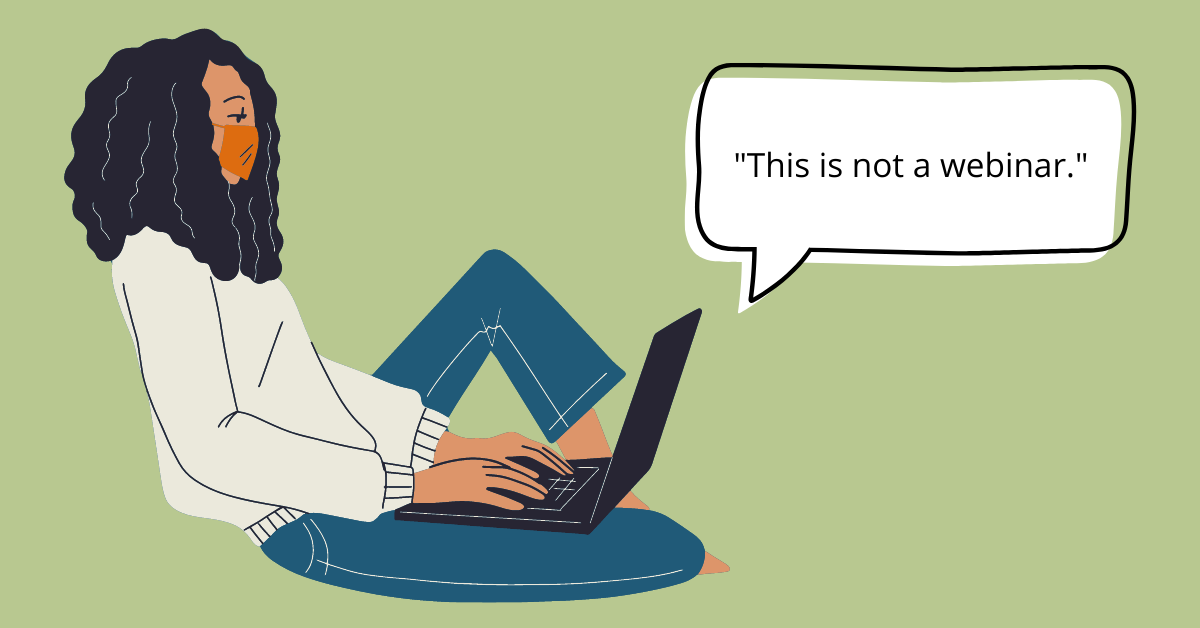Casey Bishopp, Technical Officer, Science Facilitation, FHI 360
When my colleagues and I realized more than 60 people representing Zimbabwe Health Interventions and FHI 360 Zimbabwe had signed up for the next iteration of our five-day HIV Prevention Ambassador Trainers’ Workshop, we were a little bewildered. How would we guarantee these sessions didn’t feel like webinars? We wanted to engage the participants, and ensure facilitators were viewed as available and approachable. But we had not previously worked with such a large group in a virtual setting. Here’s what we did.
The more, the merrier, the mentorship network
We knew we had to create a process for learners to connect with the training content in a meaningful way because discussion might be inhibited in such a large group. Luckily, we had a group of talented and dedicated facilitators as part of our crew. Each day was structured to include ample small group time with mentorship groups that had a facilitator serving as leader and a subject expert. During small group sessions, eight to 10 learners led by one mentor got to know one another and have some “face time” with their designated expert. Groups reviewed the day’s content and workshopped tricky situations. This helped keep learners accountable and provided space for less outspoken participants to feel comfortable talking and asking questions. Mentors and mentees shared contact information to keep in touch after the training ended, and in a post-training survey, 78 percent of respondents agreed that the mentorship groups facilitated their learning. Here’s a sample of the feedback:
“The mentorship groups were so interactive, and information was being disseminated well.”
“The breakout sessions allowed for deeper engagement with both content and other fellow participants.”
“You guys are awesome. Our group leader, Millicent, we had an amazing time with you.”
Building in a buffer
Anyone who has been in a large meeting or webinar knows that it’s easy to slip in and out unnoticed. While we didn’t want to behave like stern school principals, we knew participants needed to experience the full training to get the most of out of it. It’s difficult to ensure attendance from participants across the globe, so we relied heavily on our counterparts within the organization receiving the training to encourage full participation and regular attendance. We also made a few adjustments to our training:
- We stretched the training from four days to five and reduced the time from three hours per day to two and a half. Schedules inevitably began to unravel as sessions took longer than expected, and we knew we couldn’t ask a good training facilitator to cut short a rich discussion. We built in a buffer zone so that any content we had to skip on day two, for example, could still be covered over the course of the training.
- Second, we got comfortable with the discomfort of starting a little late each day. The fact is, attendance will never be perfect within the first five minutes of a virtual training or meeting. Though it might seem long, we found that building in a 10-minute period for people to join the call, lose connection, and re-join, helped us reach a critical mass of participants before we dove into content.
By planning for delays, we were able to “feel” on time, and things went smoothly. A good rule of thumb is to double the length of time that you expect to need for an activity. Flexibility and creative thinking go a long way in ensuring the training experience is as stress-free and meaningful as possible—for both the facilitators and the learners.
This is the fourth blog post in a series on the design, development, implementation, and iterative processes of the interactive and virtual HIV Prevention Ambassador Trainers’ Workshop, led by the U.S. President’s Emergency Plan for AIDS Relief (PEPFAR)- and the United States Agency for International Development (USAID)-supported Collaborative for HIV Prevention Options to Control the Epidemic (CHOICE) through the terms of cooperative agreements of the EpiC and RISE projects. In this series, we share our experience and reflect honestly on the ups and downs of designing and delivering a comprehensive training virtually. Access the HIV Prevention Ambassador Trainers’ Workshop materials here.
Photo Credit: Canva

